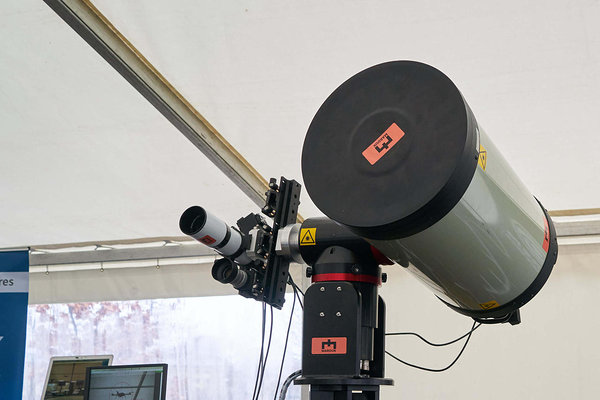Quite often the issues of national defence are considered to be something secret, mystical and closed, living their own life behind high walls and not concerning the common people. However in reality, a nation’s defensive capacity is a much wider quality, affected by nearly all people and institutions. A nation’s ability to defend itself does not depend only on the number of soldiers or the level of their equipment. At least as important are the roles of universities, private companies and non-governmental organizations.
One of the most common product development principles in the defence industry is dual-use. When developing a military technology, it’s civilian usage is also considered. The most well known results of this R&D principle are the internet and GPS. In Estonia, one of the best examples is the modular unmanned ground vehicle (UGV) by Milrem Robotics, which was recently used by the fire department to assist in extinguishing a fire on a military polygon, with potentially explosive materials nearby. Though the primary function of these vehicles will be military, they will also find plenty of usage assisting in civilian emergencies with high risk factor. Other good examples of dual-use technologies come from Estonian producers Threod and Eli who are both making highly capable drones used by the military and the police.
Probably there’s not much anything cooler than chasing drones with lasers. That’s exactly what the people from Marduk are doing, day in day out. They have developed a defensive weapon against hostile drones able to operate autonomously in radio silence. As radio jamming doesn’t affect such drones, Marduk is tracking and targeting the drones precisely enough to keep a laser beam on them. The lasers can temporarily blind the drones, denying them the ability to gather any visual intelligence and even burn out the sensors of the cameras the drones use for orientation. What’s best, their platform is entirely built from off-the-shelf parts. An excellent example of how mainstream technology can be used to build military-grade solutions.
But innovation doesn’t always mean hi-tech electronics or futuristic robots. Sometimes even seemingly small things can make a difference, when approached from a new perspective. That’s been the case of emergency splints, which have basically remained unchanged for decades. A team of product designers and former military medics from ETHR sought out to improve the situation and started working on a new type of emergency splint, which would be of variable size, usable for different injuries on both hands and legs, durable, compact and easy to produce. The resulting product, though still in its last stages of development, has already received considerable critical acclaim from both field medics and defence experts and is due to enter the markets shortly.
These are only a few examples of defence technologies from Estonia. This autumn presents a rare opportunity to work on new and innovative solutions alongside the top specialists of the defence sector. Garage 48 Defence Makeathon is one of the first defence oriented hackathons in the area, with an emphasis on developing hardware solutions and prototypes. The event is organized in cooperation with the Estonian Ministry of Defence, the Estonian National Defence College and the Estonian Defence Industry Association and it is an excellent opportunity to get a glimpse at the development of defence technologies.
Though Estonia is well known for the digital software and e-governance solutions, our reputation as world class robotics and bespoke electronics solutions developer is quickly gaining ground. As the aim of the hackathon is creating new products, the teams will be provided with all the necessary tools for designing and prototyping.
Of course it’s not possible to create a revolutionary and full-fledged working product within 48 hours, but the participants do get a rare chance to work alongside industry experts and get a glimpse at the inner workings of the defence sector. And lest we forget, a good engineer with right contacts and excellent technical knowledge is as important in an emergency as is a specially trained soldier - but together they constitute a formidable opponent to any hostile forces.
Valdek Laur, Estonian Defence Industry Association
Cover photo: Kaitseväe Peastaap, Teavitusosakond
